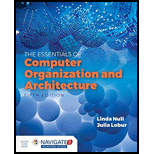
a.
K-Map:
- K-Map stands for Karnaugh Map which is used to reduce the logic functions more easily and quickly.
- It will minimize the Boolean expressions without using Boolean algebra theorems.
- By using K-Map, the Boolean expressions with two to four variables are easily reduced.
Explanation of Solution
Simplification of Boolean expression using K-Map:
Given:
The K-Map for the given expression is as follows:
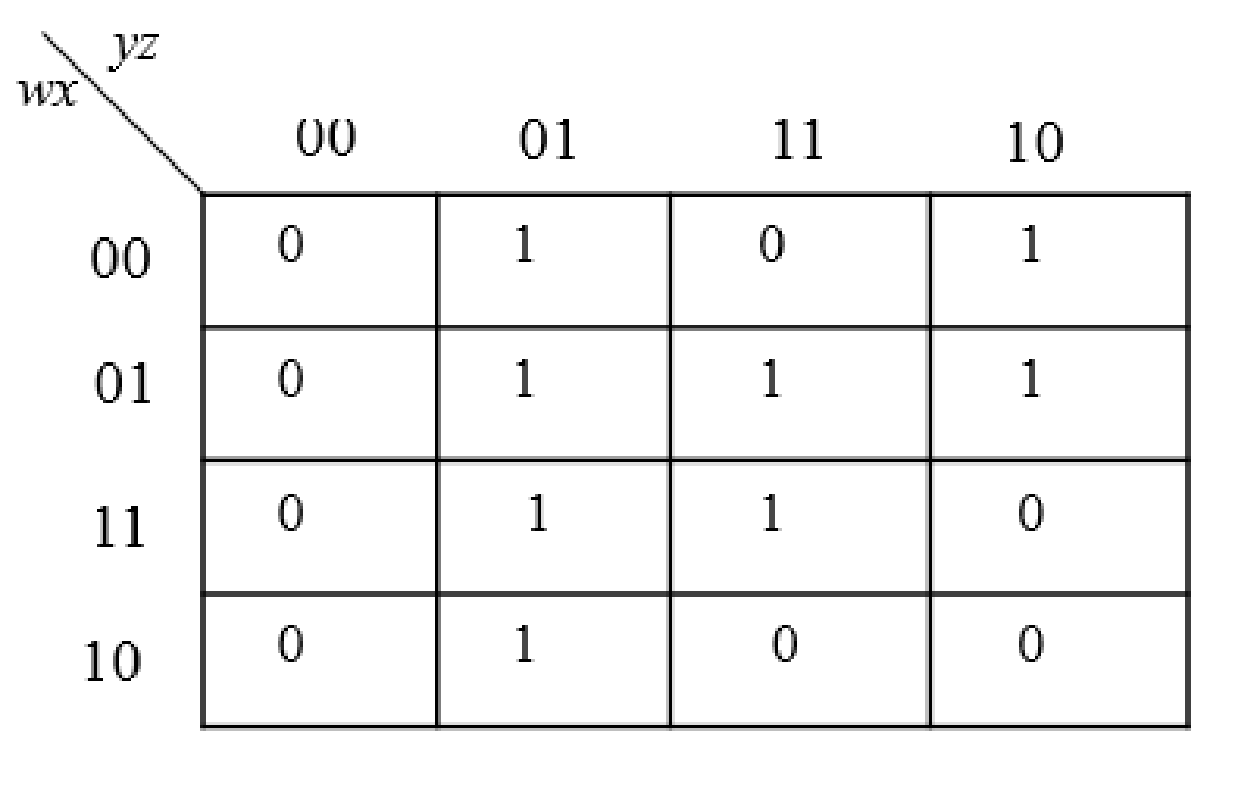
The following steps are used to obtain the simplified Boolean expressions.
Step1:
Then group another possible 1’s in the table. Then write the Boolean expression according to the mapping. Write 0 term’s as complemented variable like x’ and 1 term’s as it is like x.
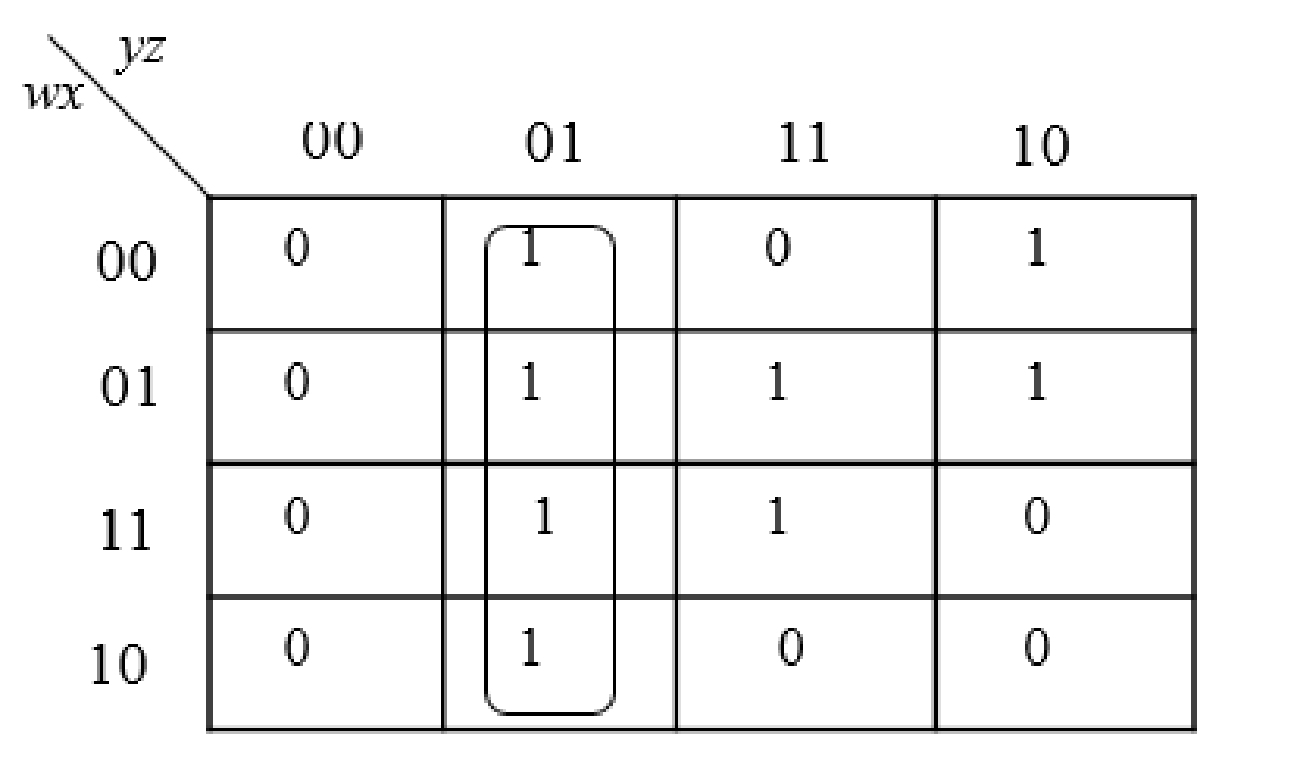
Step2:
The group the 1’s in the table. Then write the Boolean expression according to the mapping. Write 0 term’s as complemented variable like x’ and 1 term’s as it is like x.
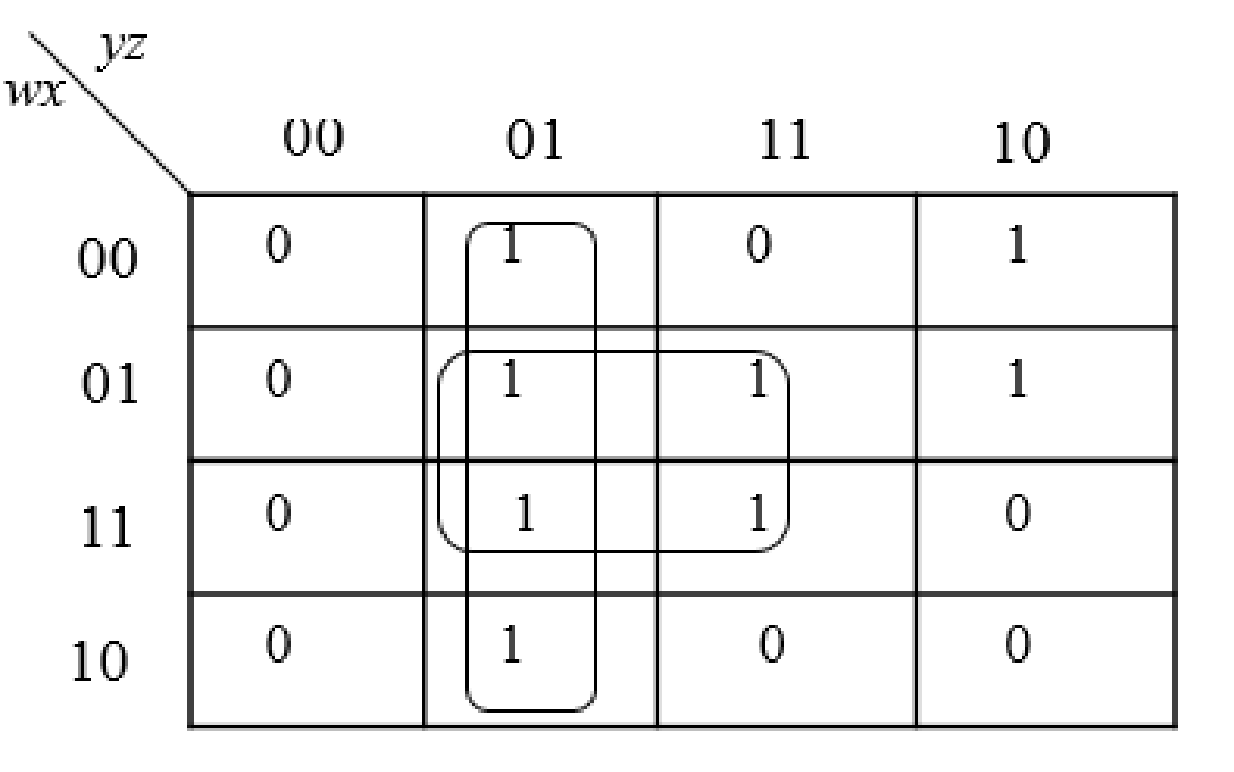
Step3:
The group the 1’s in the table. Then write the Boolean expression according to the mapping. Write 0 term’s as complemented variable like x’ and 1 term’s as it is like x.
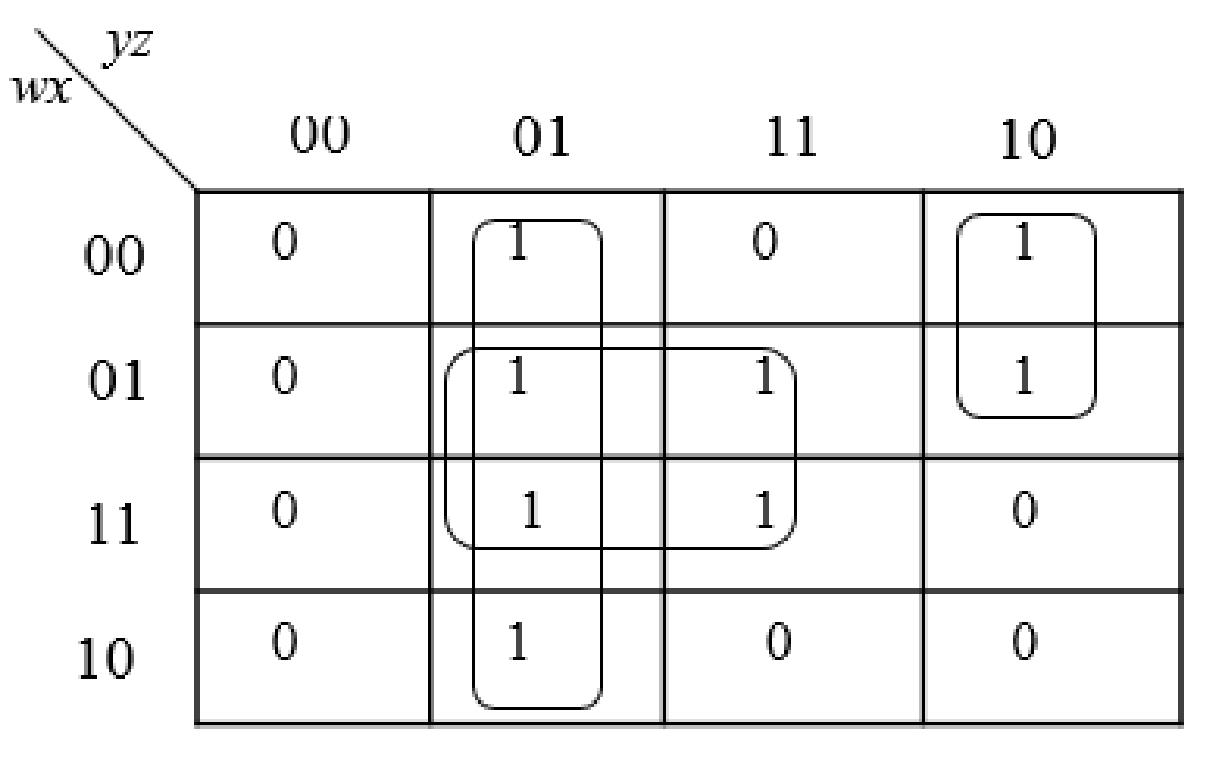
Step4:
Group all the expressions
Therefore, the simplified expression is “
b.
K-Map:
- K-Map stands for Karnaugh Map which is used to reduce the logic functions more easily and quickly.
- It will minimize the Boolean expressions without using Boolean algebra theorems.
- By using K-Map, the Boolean expressions with two to four variables are easily reduced.
Explanation of Solution
Simplification of Boolean expression using K-Map:
Given:
Simplifying the given equation into 4 variable terms as shown below:
The K-Map for the given expression is as follows:
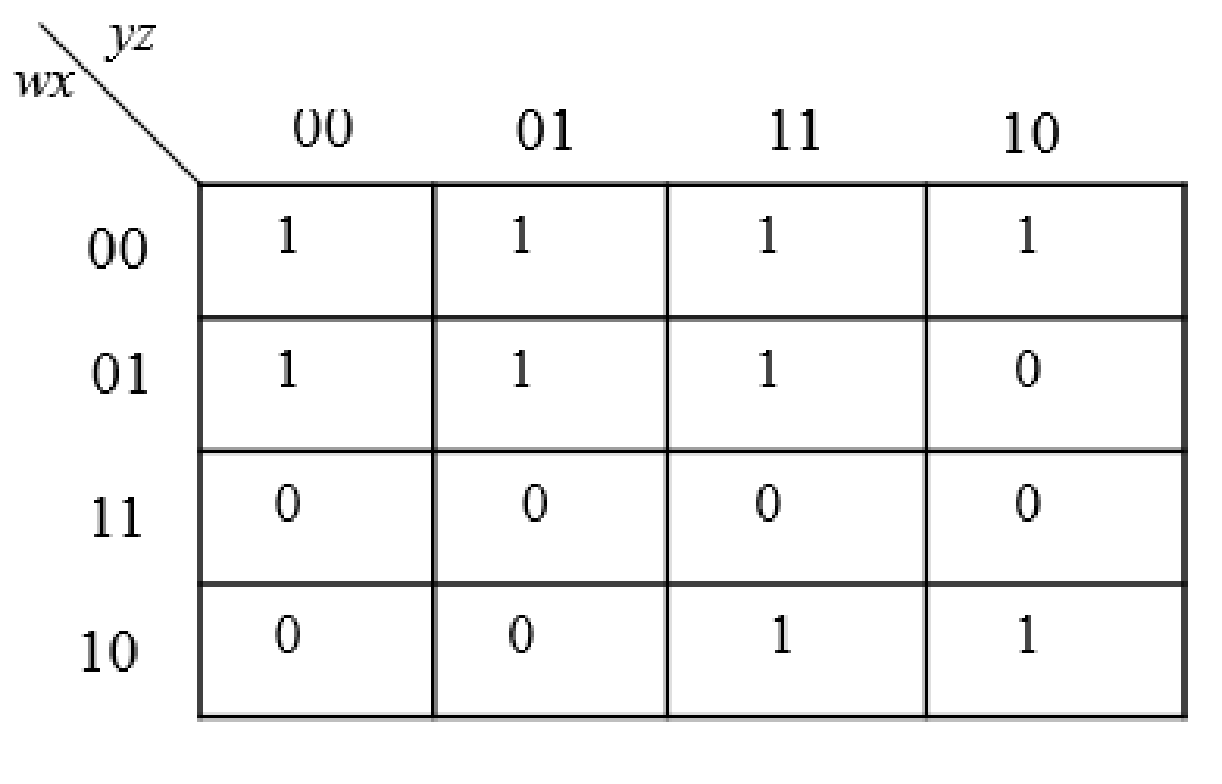
The following steps are used to obtain the simplified Boolean expressions.
Step1:
The group the 1’s in the table. Then write the Boolean expression according to the mapping. Write 0 term’s as complemented variable like x’ and 1 term’s as it is like x.
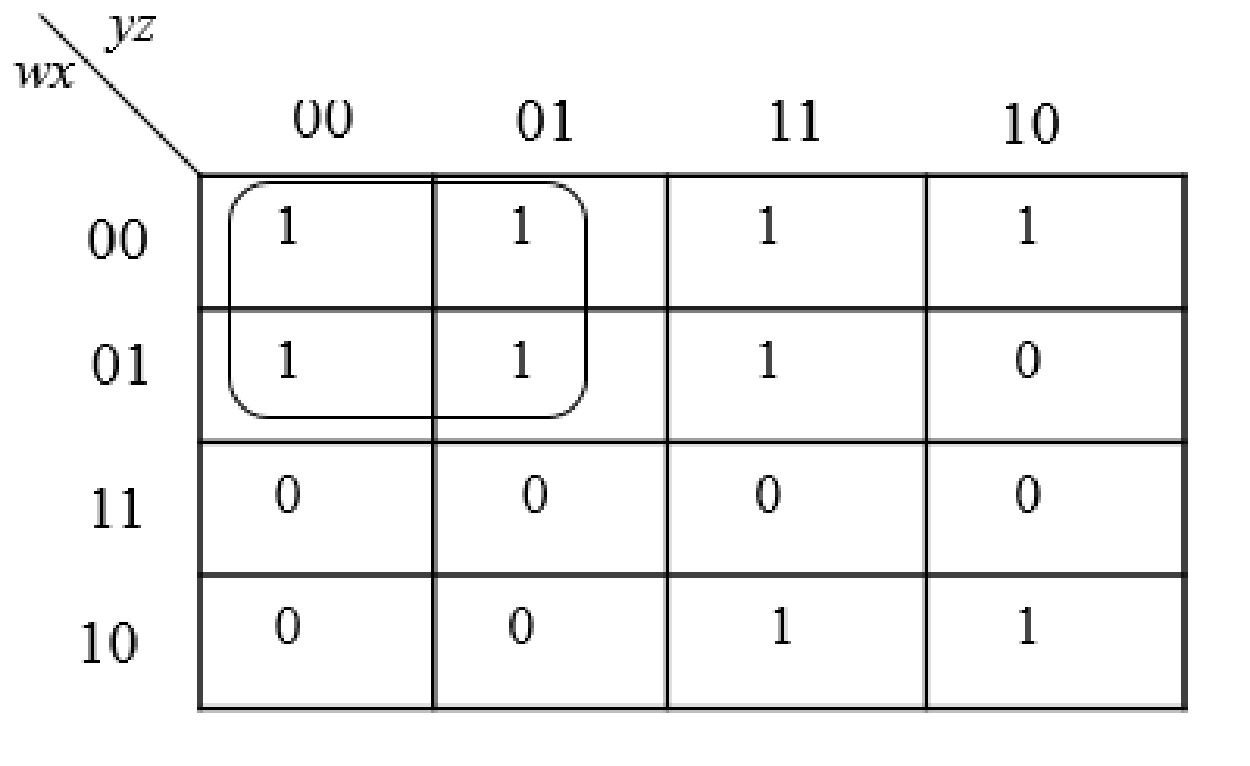
Step2:
The group the 1’s in the table. Then write the Boolean expression according to the mapping. Write 0 term’s as complemented variable like x’ and 1 term’s as it is like x.
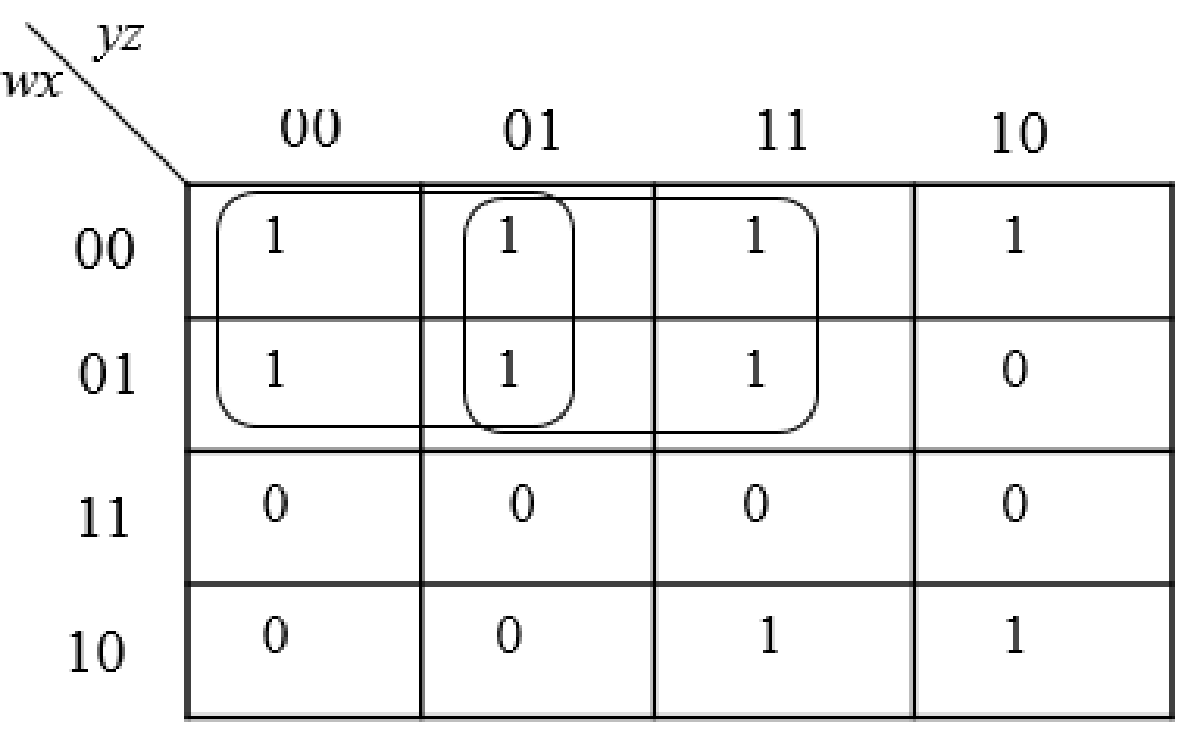
Step3:
The group the 1’s in the table. Then write the Boolean expression according to the mapping. Write 0 term’s as complemented variable like x’ and 1 term’s as it is like x.
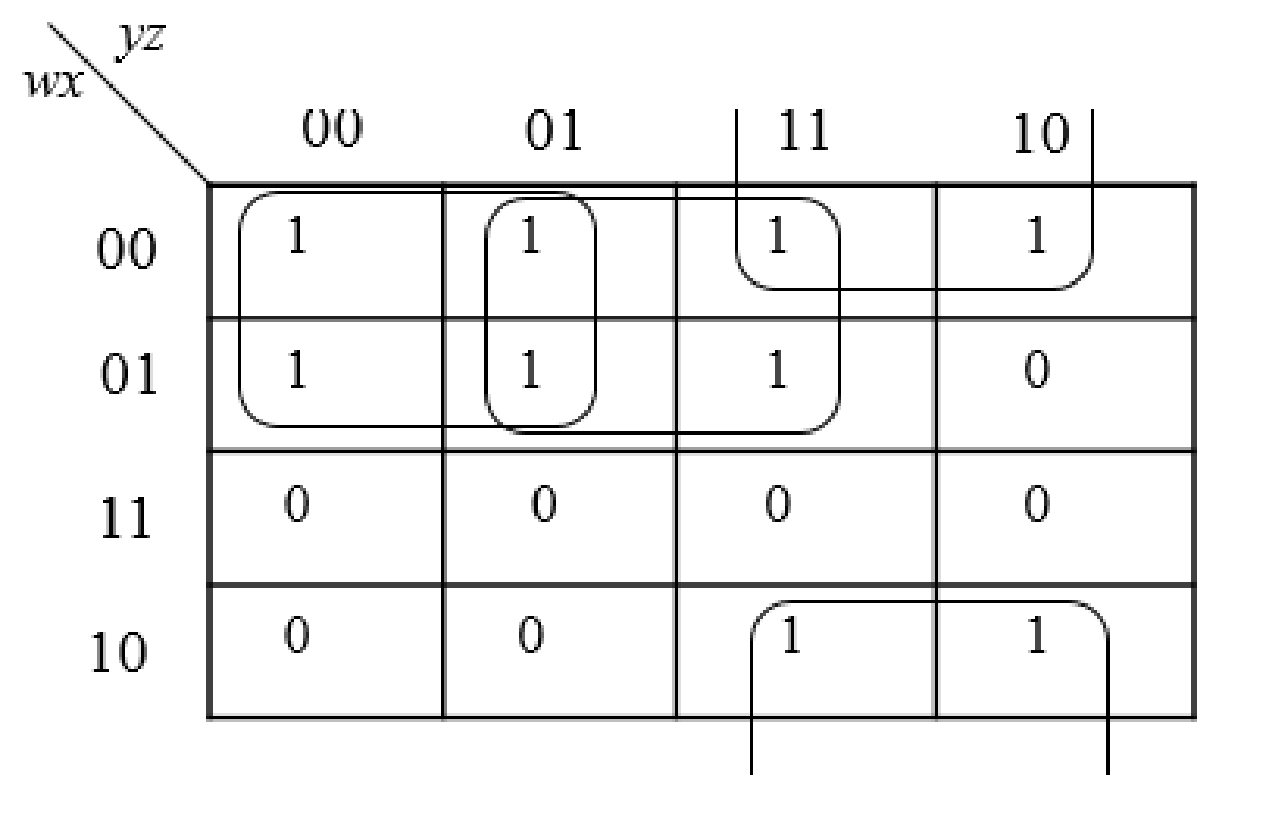
Step4:
Group all the expressions
Therefore, the simplified expression is “
c.
K-Map:
- K-Map stands for Karnaugh Map which is used to reduce the logic functions more easily and quickly.
- It will minimize the Boolean expressions without using Boolean algebra theorems.
- By using K-Map, the Boolean expressions with two to four variables are easily reduced.
Explanation of Solution
Simplification of Boolean expression using K-Map:
Given:
Simplifying the given equation into 4 variable terms as shown below:
The K-Map for the given expression is as follows:
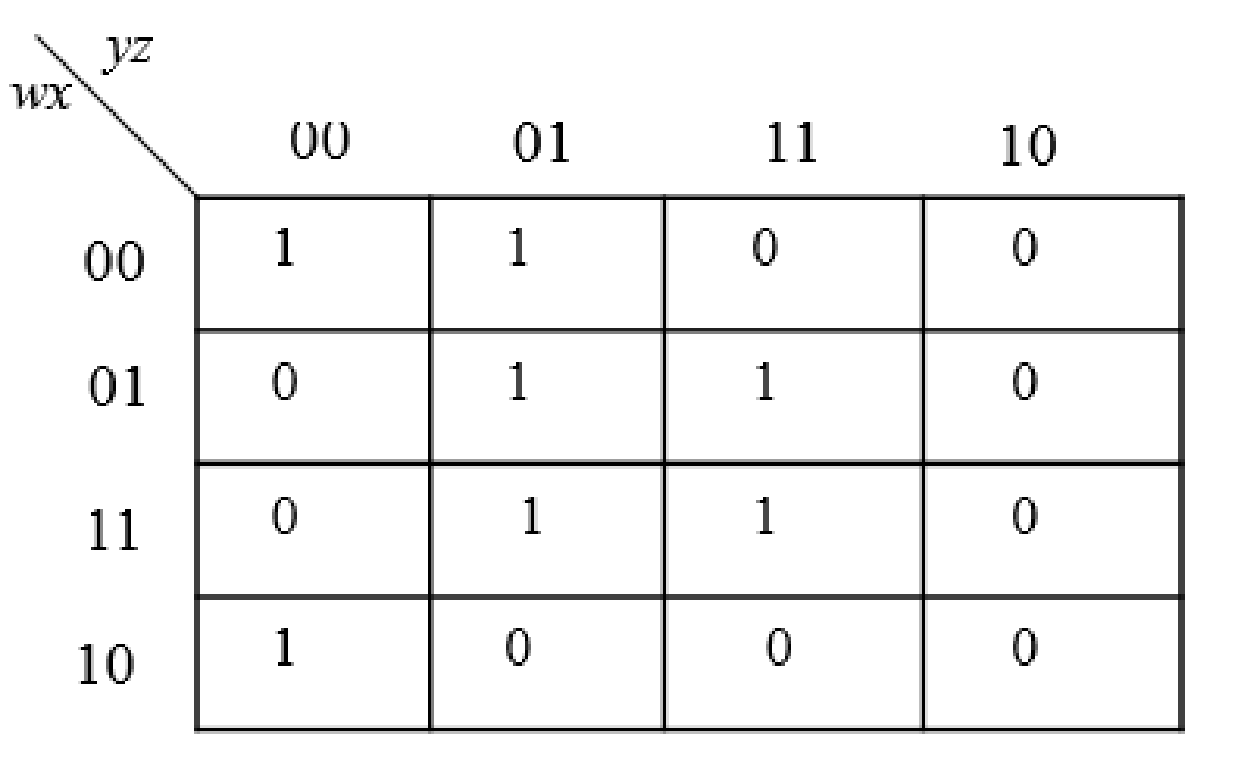
The following steps are used to obtain the simplified Boolean expressions.
Step1:
Then group another possible 1’s in the table. Then write the Boolean expression according to the mapping. Write 0 term’s as complemented variable like x’ and 1 term’s as it is like x.
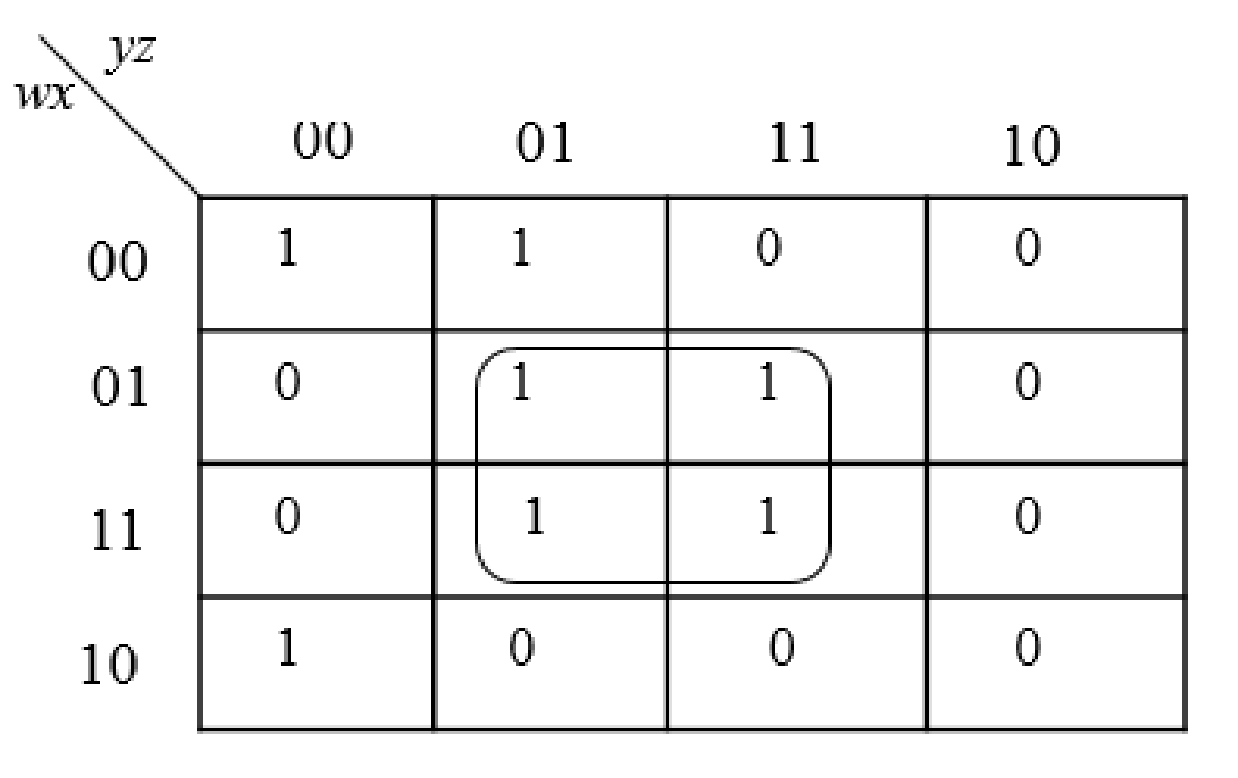
Step2:
The group the 1’s in the table. Then write the Boolean expression according to the mapping. Write 0 term’s as complemented variable like x’ and 1 term’s as it is like x.
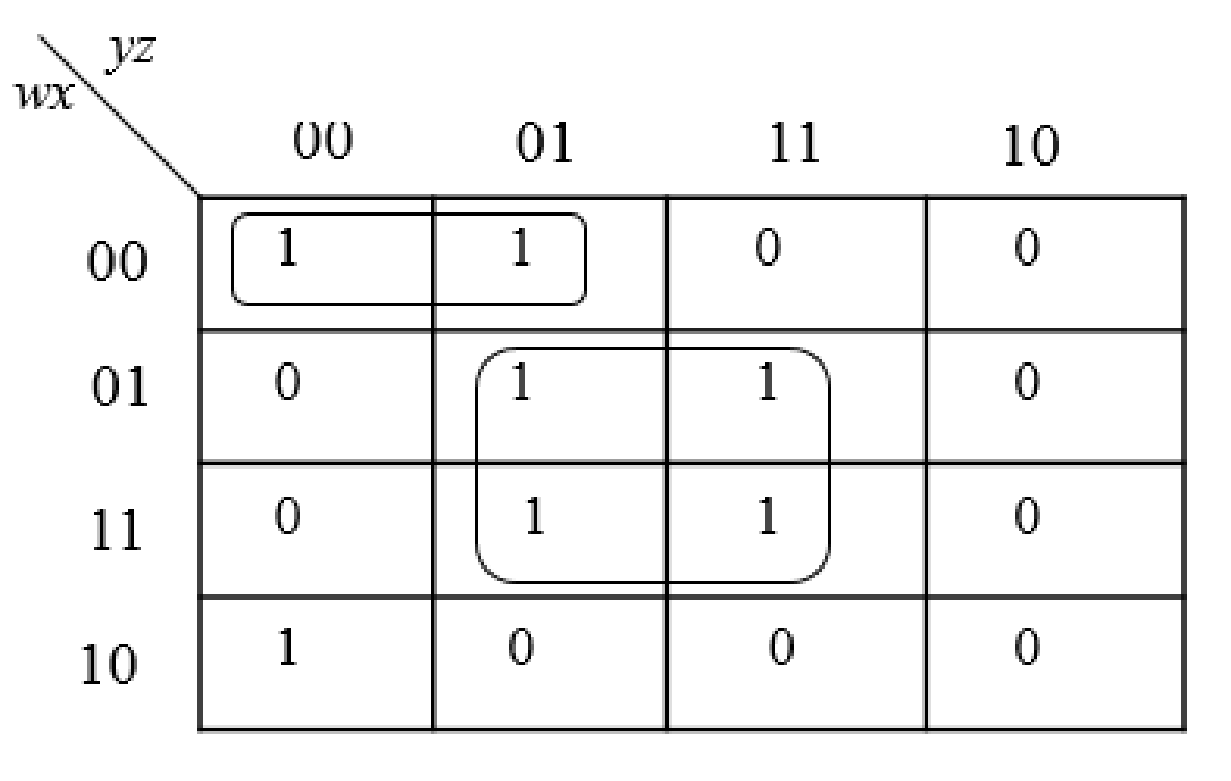
Step3:
The group the 1’s in the table. Then write the Boolean expression according to the mapping. Write 0 term’s as complemented variable like x’ and 1 term’s as it is like x.
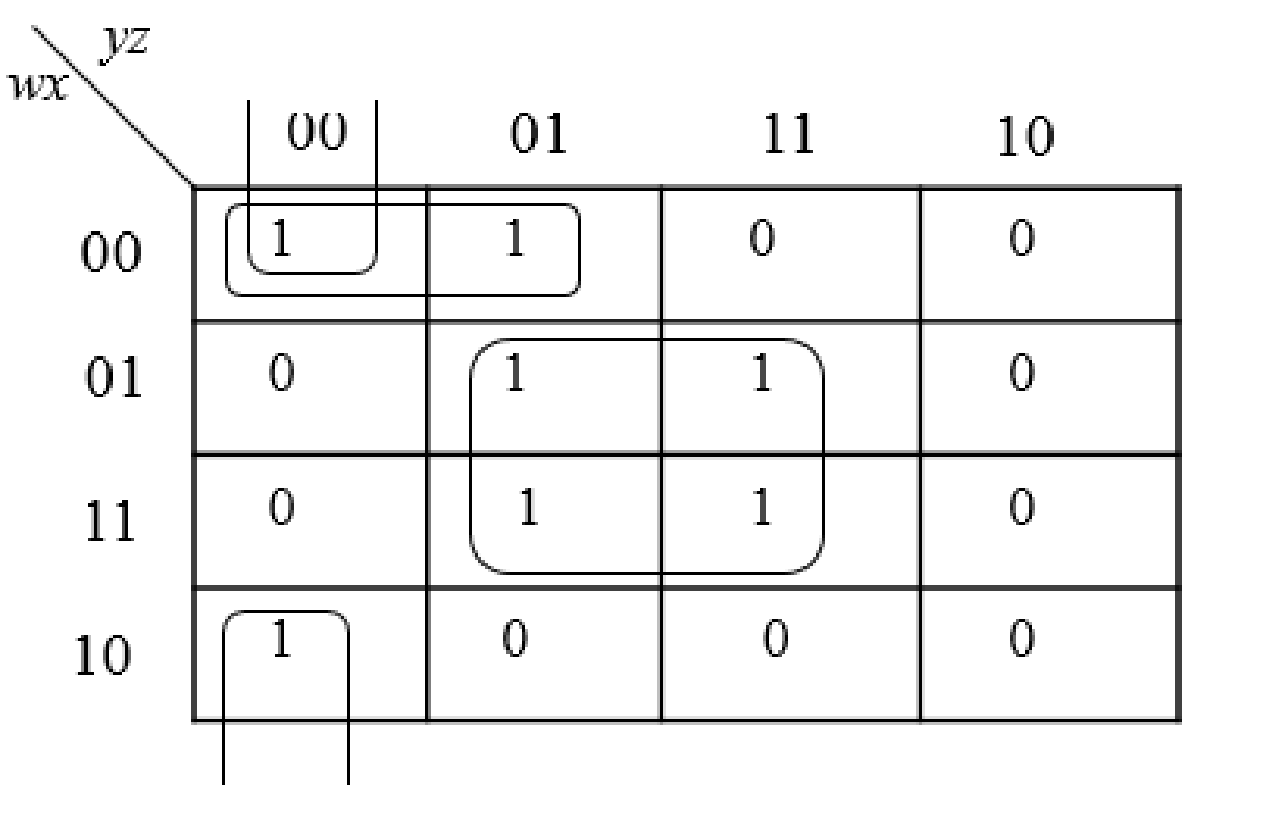
Step4:
Group all the expressions
Therefore, the simplified expression is “
Want to see more full solutions like this?
Chapter 3 Solutions
Essentials of Computer Organization and Architecture
 Database System ConceptsComputer ScienceISBN:9780078022159Author:Abraham Silberschatz Professor, Henry F. Korth, S. SudarshanPublisher:McGraw-Hill Education
Database System ConceptsComputer ScienceISBN:9780078022159Author:Abraham Silberschatz Professor, Henry F. Korth, S. SudarshanPublisher:McGraw-Hill Education Starting Out with Python (4th Edition)Computer ScienceISBN:9780134444321Author:Tony GaddisPublisher:PEARSON
Starting Out with Python (4th Edition)Computer ScienceISBN:9780134444321Author:Tony GaddisPublisher:PEARSON Digital Fundamentals (11th Edition)Computer ScienceISBN:9780132737968Author:Thomas L. FloydPublisher:PEARSON
Digital Fundamentals (11th Edition)Computer ScienceISBN:9780132737968Author:Thomas L. FloydPublisher:PEARSON C How to Program (8th Edition)Computer ScienceISBN:9780133976892Author:Paul J. Deitel, Harvey DeitelPublisher:PEARSON
C How to Program (8th Edition)Computer ScienceISBN:9780133976892Author:Paul J. Deitel, Harvey DeitelPublisher:PEARSON Database Systems: Design, Implementation, & Manag...Computer ScienceISBN:9781337627900Author:Carlos Coronel, Steven MorrisPublisher:Cengage Learning
Database Systems: Design, Implementation, & Manag...Computer ScienceISBN:9781337627900Author:Carlos Coronel, Steven MorrisPublisher:Cengage Learning Programmable Logic ControllersComputer ScienceISBN:9780073373843Author:Frank D. PetruzellaPublisher:McGraw-Hill Education
Programmable Logic ControllersComputer ScienceISBN:9780073373843Author:Frank D. PetruzellaPublisher:McGraw-Hill Education





